🔥 Big Move Alert: India has just suspended the Indus Waters Treaty—yes, that Indus Waters Treaty that’s been holding its ground since 1960, even through wars and multiple terror strikes.
This dramatic step came in the wake of a tragic terror attack in Pahalgam (April 22) that killed 26 civilians, most of them tourists. Now, India is making it clear: it’s done playing nice when national security is on the line.
🧭 Quick Backstory: What’s the Indus Waters Treaty?
Signed in 1960, this treaty is a water-sharing pact between India and Pakistan brokered by the World Bank.
The rivers were divided up:
- India received exclusive rights to the eastern rivers (Sutlej, Beas, and Ravi), Pakistan.
Pakistan was allocated the western rivers (Indus, Jhelum, and Chenab)
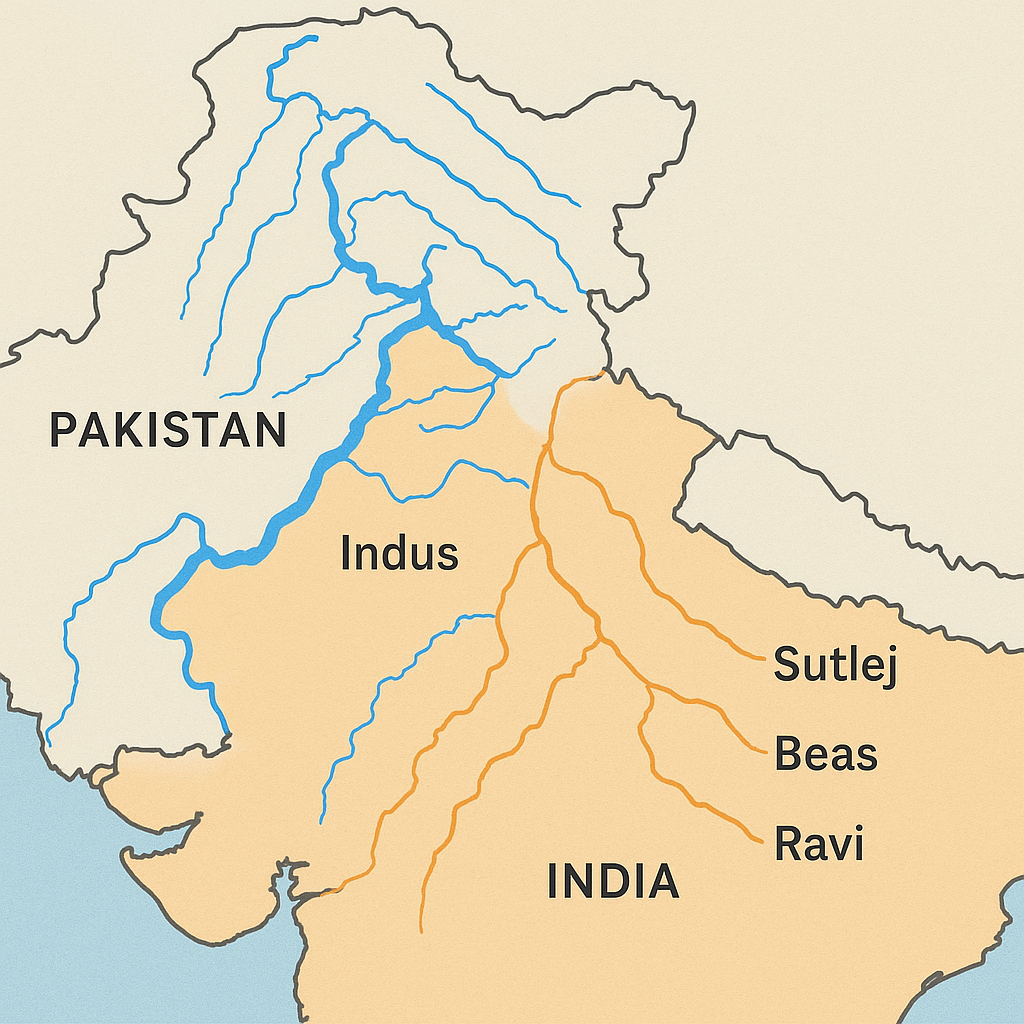
And despite wars and decades of hostility, this treaty stood firm—until now.
💣 What Triggered the Suspension?
The April 22 terror attack in Kashmir was the final straw.
The next day, India said enough:
- Suspended the treaty ✅
- Shut the Attari Integrated Check Post 🚫
- Cut down diplomatic staff from both sides ✂️
India says the treaty will stay suspended until Pakistan shows a “credible and irreversible” end to its support for cross-border terrorism.
💧So, What Changes on the Ground?
- India won’t share river discharge data anymore
- Pakistan’s Commissioner can’t inspect Indian hydro projects
- Releases from Indian projects like Kishanganga may stop—bad news for Pakistan’s crops 🌾
📈 Economic Upside for India
Let’s talk numbers and power potential ⚡
India has long been restricted from fully developing hydro projects on the western rivers due to the treaty—and Pakistan’s habit of dragging things into international arbitration.
Now? The gloves are off.
A former power ministry secretary put it bluntly:
“We can now plan a dam on the Indus like China does on the Brahmaputra, without worrying about Pakistan’s complaints.”
Even talking about such projects gives India some serious strategic leverage.
🚀 Fast-Tracking Dams & Hydropower Projects
India’s hydro sector is underdeveloped—only 29% of 145 GW potential is tapped.
And in Jammu & Kashmir?
Not a single project commissioned in the last 5 years.
Why? Treaty-based delays.
With the brakes off, projects stuck in limbo can finally move full steam ahead.
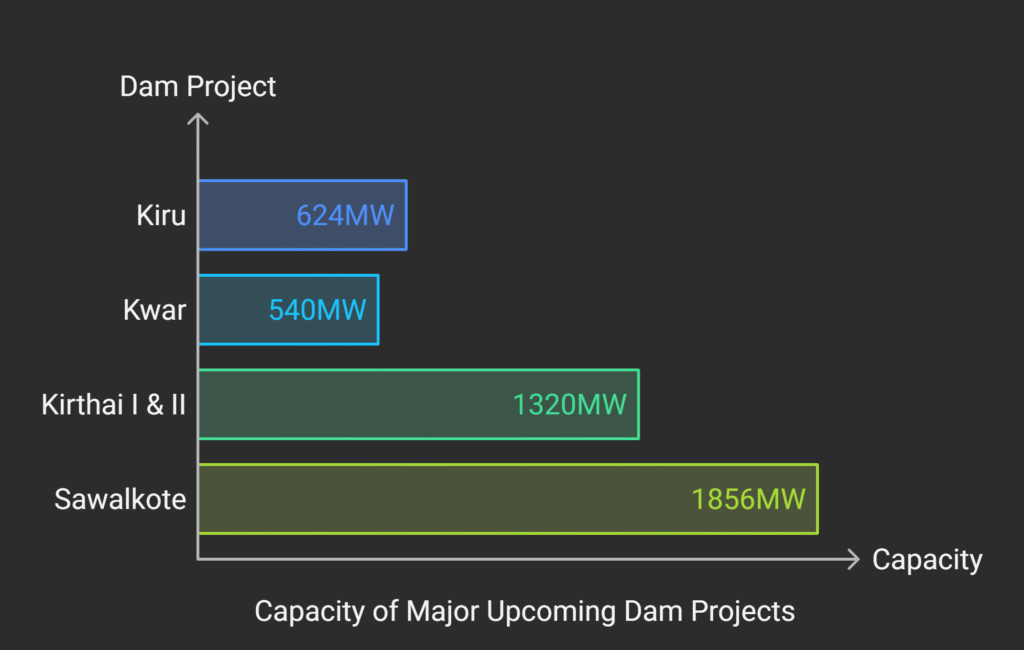
🔋 Why Hydropower? It’s Not Just About Power…
Unlike solar and wind, hydropower is:
- Always-on (Downside of Solar)
- Great for grid stability (frequency response, spinning reserve)
- Long-lasting (dams can run for 50–100 years)
It’s the heavyweight champion of renewables.
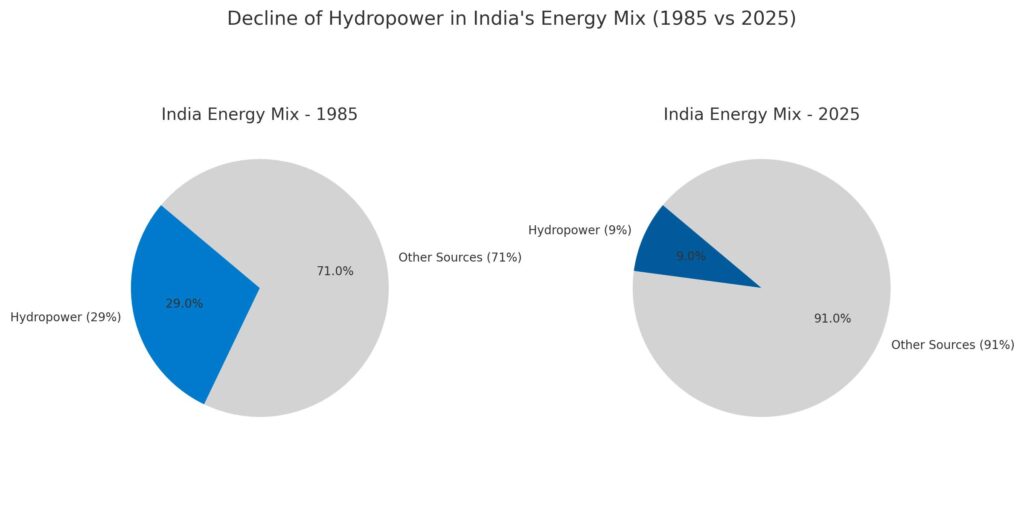
This Pie chart shows India’s energy mix –
We can clearly see the decline of hydropower from 29% in 1985 to just 9% today, and show growth potential.
⚖️ But Wait… It’s Not All Smooth Sailing
The treaty doesn’t actually have a “pause” clause, so there could be:
- Legal backlash at international forums
- Diplomatic pressure from the global community
- And of course, Pakistan’s fierce opposition
🎤 Pakistan’s Power Minister: “We will defend our water rights—legally, politically, and globally.”
Plus, most dam projects take years to build. India will need serious policy push and investment muscle to make the most of this.
🧩 The Bottom Line
India’s suspension of the Indus Waters Treaty is as much a message as it is a move—telling the world it’s willing to flex both its diplomatic and developmental muscle when national interest is on the line.
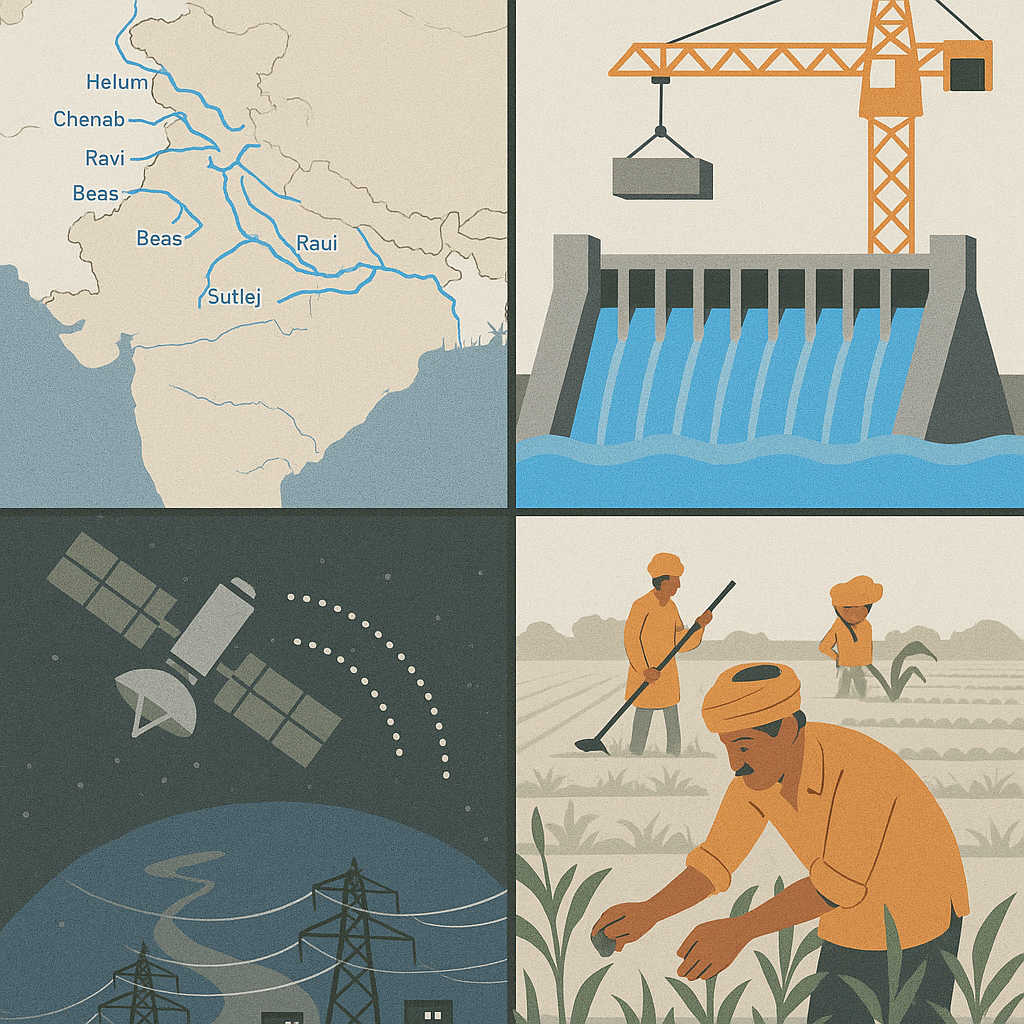
In the long run, this could reshape not just India’s energy future, but also its position on the global geopolitical chessboard.
The question now is: Can India turn this moment into momentum?
What do you think? Comment below.

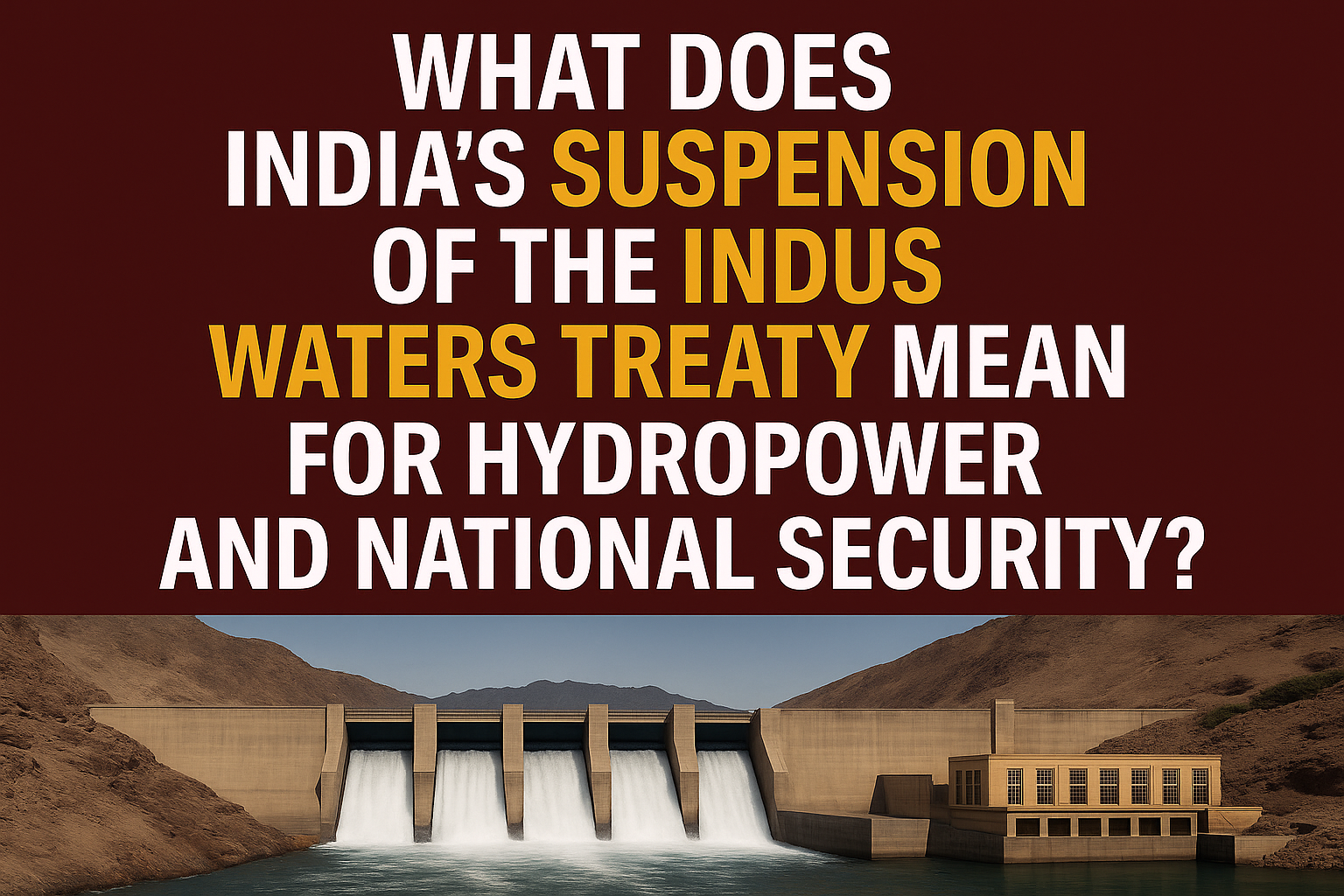
2 thoughts on “Impact of the Indus Water Treaty Suspension on India’s Economy”
hi
Hello!